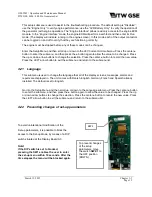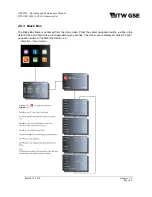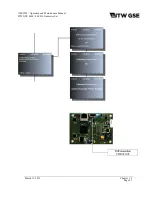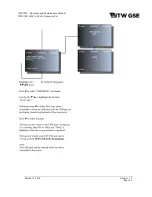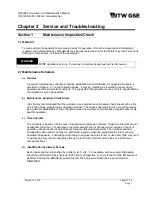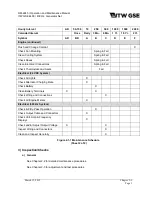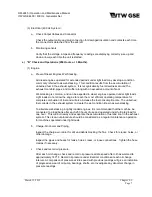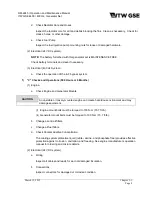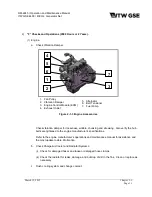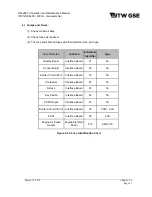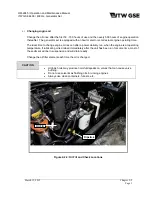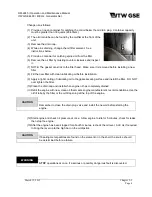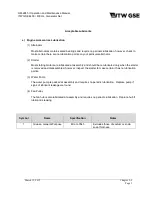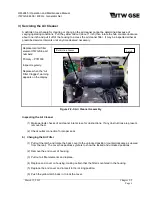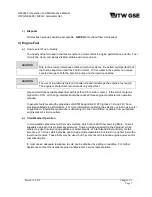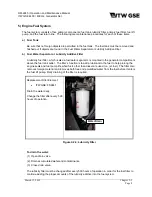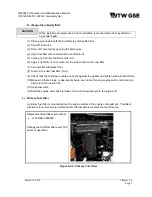
OM-2245 / Operation and Maintenance Manual
ITW GSE 4400 / 400 Hz. Generator Set
March 15, 2015
Chapter 2-1
Page 7
(3) Electrical (400 Hz System).
a
Check Output Cables and Connector.
Check the output cable and plug connection for damaged insulation and contacts each time
the connector is detached from the aircraft.
b
Monitoring sensors.
Verify that the voltage, amps and frequency readings are displaying correctly (use up and
down arrows) each time the unit is started.
e) “B” Check and Operations (250 Hours or 3 Months).
(1) Engine.
a
Prevent Diesel Engines Wet Stacking.
All diesel engines operated for extended periods under light load may develop a condition
commonly referred to as wet-stacking. This condition results from the accumulation of
unburned fuel in the exhaust system. It is recognizable by fuel oil wetness around the
exhaust manifold, pipes, and muffler along with an excessive amount of soot.
Wet-stacking is common, and can be expected in diesel engines operated under light loads.
Light loads do not allow the engine to reach the most efficient operating temperature for
complete combustion of fuel and will also increase the fuel consumption rate. The unburned
fuel collects in the exhaust system to create the wet condition known as wet-stacking.
To alleviate wet-stacking in lightly loaded engines, it is recommended that the machine be
connected to a load bank after each 250 hours of use and operated under full rated load for
one hour. This will burn away and evaporate the accumulation of fuel and soot in the exhaust
system. This clean-out procedure should be considered as a regular maintenance operation
for machines operated under light loads.
b
Charge-Air-Cooler and Piping.
Inspect the charge-air-cooler for dirt and debris blocking the fins. Check for cracks, holes, or
other damage.
Inspect the pipes and hoses for leaks, holes, cracks, or loose connections. Tighten the hose
clamps if necessary.
c
Check and record oil pressure.
After each oil change, check and record oil pressure at idle speed after oil has warmed to
approximately 140º F. Record oil pressure under identical conditions at each oil change
interval. A comparison of pressure at idle speed with previous readings will give an indication
of progressive wear of oil pump, bearings, shafts, etc. Investigate any abnormal change in
pressure readings.



